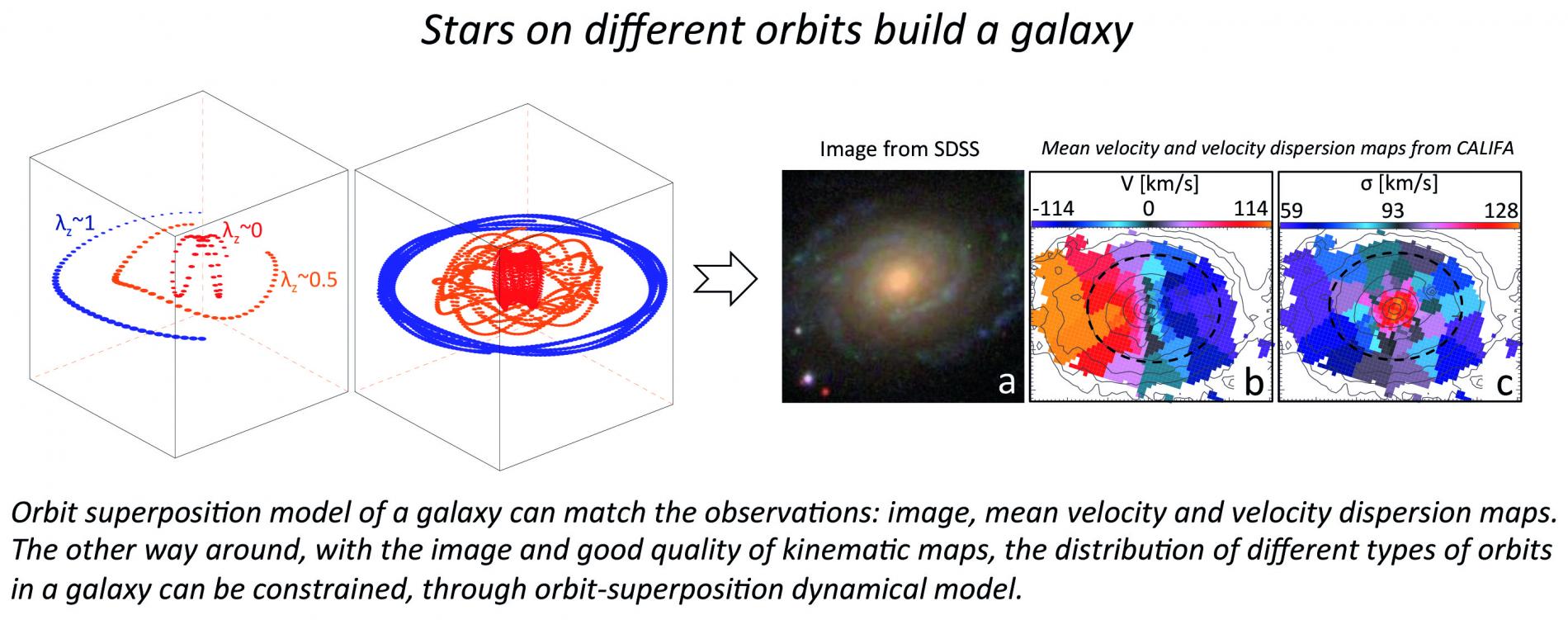Library of galaxy histories reconstructed from motions of stars | Instituto de Astrofísica de Andalucía - CSIC
http://www.iaa.es/en/news/library-galaxy-histories-reconstructed-motions-stars
The CALIFA survey allows to map the orbits of the stars of a sample of 300 galaxies, a fundamental information to know how they formed and evolved.
Just like the Sun is moving in our Galaxy, the Milky Way, all the stars in galaxies are moving, but with very different orbits: some of the stars have strong rotations,
while others may be moving randomly with no clear rotation. Comparing the fraction of stars on different orbits we can find out how galaxies form and evolve. An international
team of astronomers has derived directly, for the first time, the orbital distribution of a galaxy sample, containing more than 300 galaxies of the local universe. The results,
published in Nature Astronomy, are based on the CALIFA survey, a project developed at Calar Alto Observatory and conceived from the Institute of Astrophysics of Andalusia.
Galaxies are largest structures in the universe, and scientist study how they evolve to understand the history of the universe. Galaxy formation entails the hierarchical
assembly of halos of dark matter (a type of matter that has not been directly observed and whose existence and properties are inferred from its gravitational effects), along
with the condensation of normal matter at the halos´ center, where stellar formation takes place. Stars that formed from a settled, thin gas disk and then lived though dynamically
quiescent times will present near circular orbits, while stars with random motions are the result of turbulent environments, either at birth or later, with galactic mergers.
Proyecto CALIFA: arqueología galáctica en 3D
https://www.youtube.com/watch?v=w67yS68qwto
Thus, the motions of stars in a galaxy are like a history book, they record the information about their birth and growth environment, and it may tell us how the galaxy was formed.
"However, the motion of each single star is not directly observable in external galaxies. External galaxies are projected on the observational plane as an image and we cannot resolve
the discrete stars in it -says Ling Zhu, researcher from the Max Planck Institute for Astronomy who leads the study-. The CALIFA survey uses a recently developed technique, integral
field spectroscopy, which can observe the external galaxies in such a way that it provides the overall motion of stars. Thus, we can get kinematic maps of each galaxy."
The researchers then build models for each galaxy by superposing stars on different types of orbits. By constraining the model with the observed image and kinematic maps, they can
find out the amount of stars moving on different types of orbits in each galaxy. They call it the stellar orbit distribution and, for this study, the team has built models for all
300 galaxies, representative of the general properties of galaxies in the local universe.
